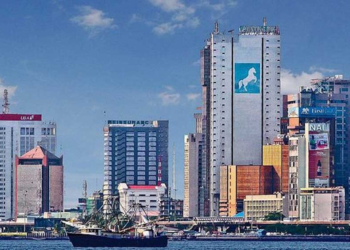The Nigerian foreign exchange (FX) market experienced a significant downturn on Monday, with turnover plummeting by 39.95%. The drop saw the turnover fall from $269.27 million at the close of last week to $161.69 million.
Market analysts suggest that the cautious approach taken by traders and financial institutions on the first trading day of the week contributed to the reduced trading volumes. This hesitation follows the recent announcement from Afreximbank regarding a substantial financial injection.
On June 6, 2024, Afreximbank announced the disbursement of $925 million, a new tranche of the $3.3 billion crude oil-backed loan agreement with the Nigerian National Petroleum Corporation (NNPC). This payment, detailed in a statement from Afreximbank, brings the total disbursed amount to $3.175 billion. The funds were sourced from crude oil off-takers, including notable firms such as Oando Group and Sahara Energy.
Naira and FX Turnover Trends Post-Announcement
Data from the Financial Markets Dealers Quotations (FMDQ) shows varied responses in the naira’s exchange rate and FX turnover following the announcement. On June 6, 2024, the naira appreciated to N1,481.49/$1, marking a 0.48% increase in the Nigerian Autonomous Foreign Exchange Market (NAFEM) window, with FX turnover at $213.31 million, up by 3.84%.
However, by June 7, 2024, the naira slightly depreciated to N1,483.99/$1, a 0.17% decline, while FX turnover surged to $269.27 million, reflecting a 26.23% increase. This trend reversed by June 10, 2024, when the naira appreciated marginally to N1,483.62/$1, but FX turnover significantly dropped by 39.95%.
Market Volatility and Financial Interventions
The substantial decrease in FX turnover, observed four days after the Afreximbank announcement, underscores the persistent volatility within Nigeria’s foreign exchange market. Despite the significant injection of funds intended to stabilize the market, the fluctuations highlight ongoing challenges.
The unification of Nigeria’s FX market in June 2023 and the subsequent depreciation of the naira prompted the federal government, through the NNPC, to secure the $3.3 billion loan from Afreximbank. The National Economic Council (NEC) had expressed confidence that this loan would help stabilize the forex market amidst severe volatility.
Current Market Dynamics
On Monday, the naira traded between a high of N1,505/$1 and a low of N1,410/$1. While this trading range may not be extreme in a volatile market, it indicates notable intra-day fluctuations. These variations reflect the market’s response to recent financial interventions and the shifting dynamics of supply and demand.
The continued volatility and significant fluctuations in the FX market underscore the challenges facing Nigeria’s financial system. The government and financial institutions must navigate these complexities to achieve a more stable and predictable economic environment.










